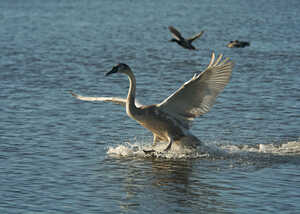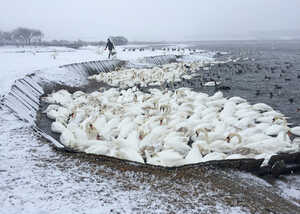A Year at the Swannery

Spring – nesting and cygnets
Springtime at the Swannery sees over 100 breeding pairs of Mute Swans, establishing their territories and making their nests. Our swans nest within close proximity to each other; this a wonderful sight, with nests, eggs and then ultimately cygnets. The first eggs appear by the end of March with the majority of incubation talking place in April. The first cygnets hatch in early May and all the hatching is completed by late June.


Summer – annual wing moult
Throughout June and July, the adult swans moult their worn and damaged flight feathers. This process takes six weeks and the birds remain flightless throughout this period, until their new feathers grow. At this time, the cygnets are developing at a surprising rate and by late September, they are almost the same size as their parents and will have a 2-metre wingspan.


Autumn – cygnet ringing
By the end of October all the years cygnets are ringed. The cygnets web tags are removed, and their adult rings are applied. Those swans that have needed some special care are also released onto the Fleet with their families. At this time of year, the number of swans at Abbotsbury increases. Other families and non-breeding birds from around Dorset and neighbouring counties head to the Fleet for winter.


Winter – taking shelter
Over the winter months, the swans at Abbotsbury move further down the Fleet to feed on the plentiful eelgrass beds. In harsh conditions, the majority of swans will head to the relatively sheltered bay of the Swannery. Here, staff can keep a watchful eye on the birds and ensure they receive some much needed food until the weather improves.

